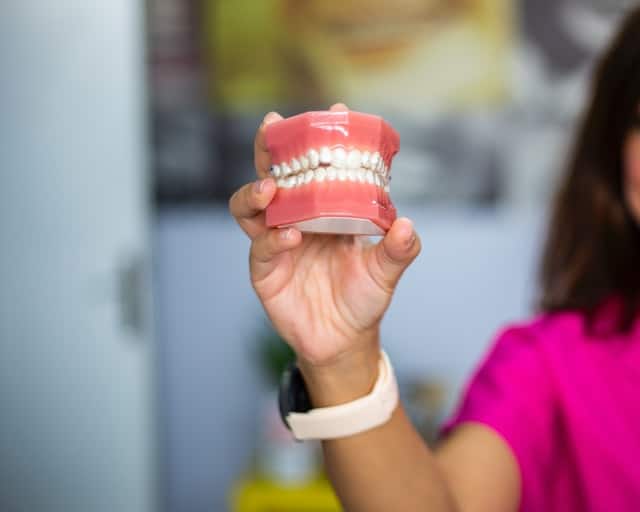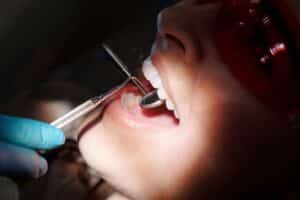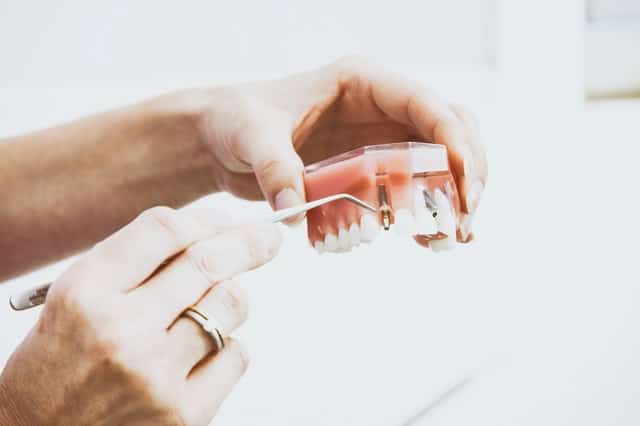All About The Different Types of Dental Bone Grafts
What are dental bone grafts? What are the types of dental bone grafts, the differences between them, and when might you need one vs. another?
We will answer all these questions in this article.
The success of dental implants is directly related to the amount of bone around the implant.
Bone loss can develop due to many different reasons, but developing technology now allows us to increase the amount of bone around the implant with artificial bone grafts taken from the patient.
With the radiographic techniques performed, it can be determined whether or not grafts will be necessary before the operation.
In cases where the bone is insufficient during the implant construction, the bone level can be increased and an implant can be applied by applying bone grafts to this area.
Bone grafts, in other words, are the compensation for the bone deficiency by adding more bone to the jaw. Natural teeth are lined up in the jawbone in the mouth.
When a tooth is lost for any reason, the jawbone weakens and deteriorates over time as there is no longer a signal to carry blood or nutrients to the tooth that used to be there.
If you get to this point, bone grafting has many benefits. It replaces lost bone, fills pockets of bone loss and promotes the growth of new bone and soft tissue.
What Are The Types of Dental Bone Grafts

Types of dental bone grafts
There are several types of bone grafting applied to create sufficient quality and quantity of bone:
- Autogenous bone grafts
- Isogenous bone grafts
- Allogeneic bone grafts (allografts)
- Xejuncic bone grafts (xenografts)
Autogenous Grafts involve bone tissue taken from the person to be implanted.
Isogenous Grafts contain tissues taken from another living thing with a similar genetic structure to the recipient.
Allogeneic grafts (Allografts) are tissues taken from the same type and a different genetic structure.
Xejonic implants (Xenografts) are tissues taken from a different type.
How Is The Graft Procedure Done?
Autogenous grafting, the grafting method that is applied with bone taken from a certain part of the body, is the most used grafting method in dentistry.
In this technique, the most preferred areas for bone transplantation are the tip or ramus regions of the lower jaw and the area called the tuber in the upper jaw, which is preferred for sinus lifting.
The immune system does not show any reaction against this grafting method because the applied bone has been taken from the environment of the body and even the mouth area.
After the bone tissue taken from the new area is placed in the implant area, the desired quality of bone volume is provided.
After waiting for the bone to heal for a while following the operation, the implant procedure can be started.
In short, bone grafting is a useful treatment method that allows implantation in case of bone loss, since it is a procedure that the patient can easily tolerate, in most cases.
What Should Be Considered After Graft Application?

Types of dental bone grafts – What should a person who has had a graft application pay attention to?
Graft applications are very sensitive applications. It would be appropriate to wait approximately 4-5 months for these applications to heal. A positive answer will be obtained in terms of the fusion of the bone tissue made with the applied area.
The waiting period for recovery should not be ignored. During this period, you should avoid any force or impact on the treated area.
If your doctor has prescribed any medication, you should not neglect it. Its regular use will be a solution for problems that may occur.
Does The Grafting Procedure Be Painful? What Food Should I Eat After the Procedure?

Types of dental bone grafts – Is the grafting procedure painful?
The grafting procedures will be equivalent to your pain threshold. The procedure is usually performed under local anesthesia.
Depending on the severity of your post-operative pain, your doctor will prescribe medication according to the necessity. You should pay attention to what you eat during and after the recovery period after the procedure.
Hard foods that require excessive chewing power should be avoided as much as possible. Gargling after food intake will be beneficial for the healing process.
If all these substances are not taken into consideration, the rate of improvement in treatment will decrease significantly.
See Also:

As a nutritionist, I research, find and experiment with recipes, natural diets and meal plans for weight loss, bodybuilding, and detoxing.
